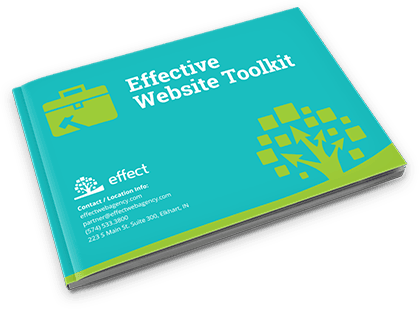Responsive design is an essential component of modern web development. As more users access websites from a variety of devices, including mobile devices, businesses must prioritize creating sites that provide a seamless experience regardless of screen size or resolution. A responsive design makes sure that a site’s layout, content, images, and functionalities adapt to the user’s device, allowing users to access a site from anywhere. Join us as we explore the intricate connection between responsive design and user engagement and experience.
What is responsive design?
Responsive design allows a site to adapt to a variety of screen sizes and devices. Using web development features like flexible grids, fluid images, and CSS media queries, responsive design creates accessible layouts that maintain functionality and aesthetic appeal no matter how the site is accessed.
The essence of responsive design lies in its adaptability. Some older web design methods create two separate web designs for mobile and desktop. However, this can create different experiences for different kinds of users. Alternatively, a responsive design delivers a single website that works on all devices, simplifying website management and ensuring a consistent experience for all users.
The Connection Between Responsive Design and User Engagement
What is the connection between these two?
1. Enhanced User Experience (UX)
Responsive design provides an exceptional user experience for all users. This kind of design avoids the need to zoom, scroll excessively, or wait for certain elements to load correctly, making it easier for desktop and mobile users to access the site. Responsive designs automatically optimize the entire site for each specific device, making the user’s browsing experience more enjoyable.
Responsive design is no longer an option; it is a necessity. In fact, studies show that 83% of users expect websites to provide a seamless experience across devices. Whether researching a product on their phone, completing a purchase on a tablet, or browsing a blog on a laptop, responsive design ensures consistent accessibility.
2. Improved Mobile Accessibility
Mobile devices account for over 58% of global internet traffic, a number that continues to rise. Responsive design ensures your website is fully accessible on mobile, including features like touch-friendly navigation, readable text, and optimized images.
Beyond usability, responsive design supports inclusivity. It caters to users with disabilities who rely on assistive technologies, making it easy to access websites and ensuring compliance with accessibility standards like WCAG (Web Content Accessibility Guidelines).
3. Lower Bounce Rates
A bounce rate measures how quickly users leave your site after viewing just one page. Non-responsive sites typically correlate with high bounce rates because they tend to be difficult to navigate or display poorly on the user’s device. Alternatively, a responsive design keeps users engaged for longer, reducing the likelihood of them bouncing to a competitor’s website.
4. Higher Conversion Rates
Conversions—whether they are sales, newsletter signups, or lead submissions—are directly impacted by user experience. A responsive website encourages users to interact with CTAs (call-to-action buttons), forms, and purchasing options. Studies show that responsive design can boost conversion rates by up to 11%, as users find it easier to complete their intended actions.
5. Search Engine Optimization (SEO)
Google has made mobile-first indexing the standard for ranking websites. With a non-responsive site, you could be penalized in search engine rankings, leading to decreased reach and visibility. A responsive design supports SEO goals by ensuring fast load speeds on all devices, a consistent user experience, and compatibility with Google’s criteria, ultimately contributing to greater organic traffic.
Ultimately, a good website is a key component of maximizing user engagement, ensuring users can find the content they are looking for regardless of their devices.
Implementing Responsive Design for User Engagement
This requires a strategic approach. Here are some tips for creating a responsive site:
1. Mobile-First Approach
Mirroring Google’s mobile-first indexing, start by designing on a small screen and work your way up. This strategy ensures that your site’s most critical elements are accessible and optimized for mobile users.
2. Focus on Page Load Speeds
Fast-loading websites are crucial for user engagement, preventing users from leaving your site before viewing content. Compress images, minify CSS and JavaScript, and use modern hosting solutions to reduce page loading speeds across devices.
3. Use a Simple Navigation
Effective navigation is vital for keeping users engaged. Use collapsible menus or hamburger icons for mobile devices, and ensure that navigation is intuitive across all screen sizes. Test out your site’s navigation by trying to find certain pages on a variety of devices to ensure accessibility.
4. Test on Real Devices
While simulators are helpful, testing on actual devices ensures a more accurate assessment of how your website performs. Use tools like BrowserStack or physical testing to verify responsiveness and page speed.
5. Continuous Monitoring
The digital landscape evolves rapidly. Regularly monitor and update your website to address new technologies, devices, user preferences, and search engine algorithms.
By adopting responsive design, businesses can provide a seamless experience that meets user expectations and strengthens their digital presence.
We Can Help!
Effect Web Agency provides web design and marketing services for local, regional, national, and international clients. Contact us to learn how you can improve your online visibility.




